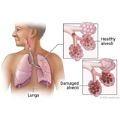Skip to main navigation
Skip to main content
Skip to footer
For
Medicare
For
Providers
For
Brokers
For
Employers
Español
For Individuals & Families:
For Individuals & Families
Medical
Dental
Other Supplemental
Explore coverage through work
How to Buy Health Insurance
Types of Dental Insurance
Open Enrollment vs. Special Enrollment
See all topics
Shop for Medicare plans
Member Guide
Find a Doctor
Log in to myCigna
Home
Knowledge Center
Wellness Library
Laparoscopic Inguinal Hernia Repair
Laparoscopic Inguinal Hernia Repair
Surgery Overview
Laparoscopic hernia repair is similar to other laparoscopic procedures. General anesthesia is given, and a small cut (incision) is made in or just below the navel. The belly is inflated with air so that the surgeon can see the organs in the belly.
A thin, lighted scope called a laparoscope is inserted through the incision. The tools to repair the hernia are inserted through other small incisions in the lower belly. Mesh may be placed over the defect to reinforce the belly wall. Or the edges of healthy tissue may be sewn together.
There are many things to think about when deciding if you should have inguinal hernia repair surgery. For example, is your hernia is incarcerated or strangulated? And do you have other conditions that need to be addressed before hernia repair surgery is needed?
What To Expect
What To Expect
Most people who have laparoscopic hernia repair surgery are able to go home the same day. Recovery time is about 1 to 2 weeks.
You most likely can return to light activity after 1 to 2 weeks. Strenuous exercise should wait until after 4 weeks of recovery.
Studies have found that people have less pain after laparoscopic hernia repair than after open hernia surgery.
Why It Is Done
Why It Is Done
Surgical repair is recommended for inguinal hernias that are causing pain or other symptoms. It's also recommended for hernias that are incarcerated or strangulated. Surgery is always recommended for inguinal hernias in children.
Laparoscopic surgery repair may not be right for people who:
- Have an incarcerated hernia.
- Cannot tolerate general anesthesia.
- Have bleeding disorders such as hemophilia or immune thrombocytopenic purpura (ITP).
- Are taking a medicine (called a blood thinner) that prevents blood clots.
- Have had many belly surgeries. Scar tissue may make the surgery harder to do through the laparoscope.
- Have severe lung diseases such as emphysema. The carbon dioxide used to inflate the belly may interfere with their breathing.
- Are pregnant.
- Are extremely obese.
Laparoscopic hernia repair usually is not done on children. But a laparoscope may be used during open hernia repairs in children to explore the opposite groin for a hernia. This can be done by inserting the scope into the side that is being operated on and looking at the opposite side. If a hernia is seen, the surgeon can repair both sides during the same operation.
Learn more
- Inguinal Hernia: Should I Have Surgery Now, or Should I Wait?
How Well It Works
How Well It Works
Laparoscopic surgery for inguinal hernia repair is safe. The chance of a hernia coming back is low when the repair is done by an experienced surgeon who uses mesh patches. Synthetic patches are now widely used for hernia repair in both open and laparoscopic surgery. The chance that a hernia needs more than one repair also depends on your age and overall health.
Laparoscopic surgery has the following advantages over open hernia repair:
- Some people may prefer laparoscopic hernia repair because it causes less pain and they are able to return to work sooner than they would after open repair surgery.
- Repair of a recurrent hernia often is easier using laparoscopic techniques than using open surgery.
- It is possible to check for and repair a second hernia on the opposite side at the time of the operation.
- Because smaller incisions are used, laparoscopy may be more appealing for cosmetic reasons.
Risks
Risks
Some people may need special preparation before surgery to decrease the risk of complications. These are people who:
- Have a history of blood clots in large blood vessels (deep vein thrombosis).
- Smoke.
- Take large doses of aspirin. Aspirin slows blood clotting. It may increase the chances of bleeding after surgery.
- Take a blood thinner.
- Have severe urinary problems, such as those caused by an enlarged prostate gland.
Risks of laparoscopic hernia repair include:
- Risks of general anesthesia.
- Pain in the testicles or in the cord that carries sperm from the testicle to the penis (spermatic cord).
- Damage to the cord that carries sperm from the testicles to the penis. This could affect your ability to father children.
- Fluid (seromas) or blood (hematomas) in the scrotum, the inguinal canal, or the abdominal (belly) muscles.
- Inability to urinate (urinary retention) or bladder injury.
- Infection from the mesh or stitches.
- Scar tissue formation (adhesions).
- Injury to belly organs, blood vessels, and nerves.
- Numbness or pain in the thigh.
- Injury to the testicle, causing testicular atrophy (rare).
- The hernia coming back. (This is usually related to the mesh applied during surgery being too small to cover the groin area. Or the mesh may not be stapled well.)
Current as of: July 31, 2024
Author: Ignite Healthwise, LLC Staff
Clinical Review Board
All Healthwise education is reviewed by a team that includes physicians, nurses, advanced practitioners, registered dieticians, and other healthcare professionals.
This information does not replace the advice of a doctor. Ignite Healthwise, LLC, disclaims any warranty or liability for your use of this information. Your use of this information means that you agree to the Terms of Use. Learn how we develop our content.
To learn more about Ignite Healthwise, LLC, visit webmdignite.com.
© 2024 Ignite Healthwise, LLC. Healthwise, Healthwise for every health decision, and the Healthwise logo are trademarks of Ignite Healthwise, LLC.
<cipublic-spinner variant="large"><span>Loading…</span></cipublic-spinner>


